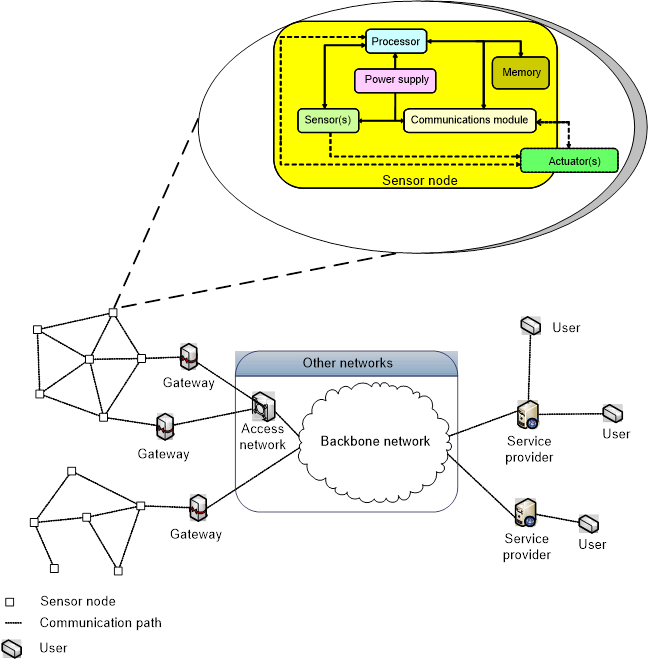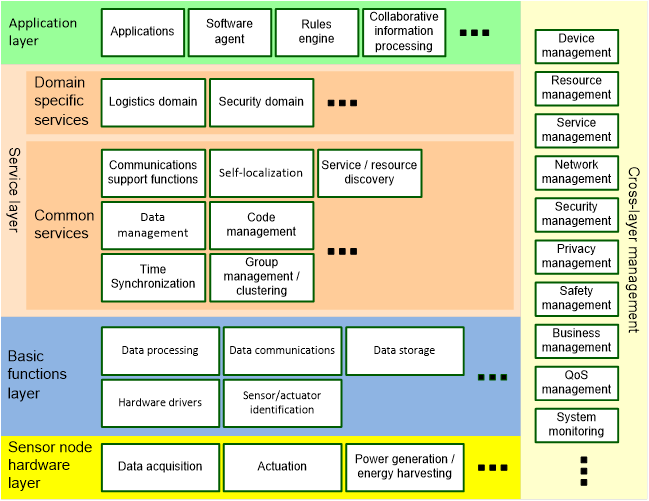Rapid Progress on Standards for Sensor Networks
Rapid Progress on Standards for Sensor Networks
October 17, 2013 - Organizations that have business interests in sensor networks as well as other organizations whose mission goals are improved by these technologies have an opportunity to participate in the international sensor network standardization activities through the InterNational Committee on Information Technology Standards (INCITS). Potential areas of further work include the Internet of Things (IoT) and Cyber Physical Systems (CPS), because sensors/actuators and more generally sensor networks are anticipated to play an important role in IoT/CPS. Companies that are currently participating in this initiative are AIM Global, Farance, Inc., Intel, NIST and Raytheon. Technical Committee INCITS/SN1, Sensor Networks, also serves as the US Technical Advisory Group to the international Working Group, ISO/IEC JTC 1/WG 7 on Sensor Networks.
ISO/IEC Joint Technical Committee 1/Working Group 7, Sensor Networks, was formed in 2010 to develop international standards for sensor networks. A wireless sensor network consists of spatially distributed autonomous sensors to monitor physical or environmental conditions, such as temperature, sound, pressure, etc. and to cooperatively pass their data through the network to a main location. The more modern networks are bi-directional, also enabling control of sensor activity. (See Figures 1 and 2 on sensor network architecture.) Despite their anticipated usage in numerous application domains, such as environmental monitoring, healthcare, intelligent transportation, energy and utilities, logistics and supply chain management, and defense/military (see Figure 3), sensor networks have been built and deployed for a relatively small number of applications. ISO/IEC JTC 1/WG 7 is intent on remedying that problem by developing groundbreaking standards.
“ISO/IEC 29182, Information technology -- Sensor networks: Sensor Network Reference Architecture (SNRA)” is a 7-part international standard based on the architectural diagram shown below. It is the main project undertaken by ISO/IEC JTC 1/WG 7 so far. The purpose of the 29182 series is to (i) provide guidance to facilitate the design and development of sensor networks, (ii) improve interoperability of sensor networks, and (iii) make sensor network components plug-and-play, so that it becomes fairly easy to add/remove sensor nodes to/from an existing sensor network. The ISO/IEC 29182 series can be used by sensor network designers, software developers, system integrators, and service providers to meet customer requirements, including any applicable interoperability requirements. The seven parts of the 29182 series are: (i) General overview and requirements; (ii) Vocabulary/terminology; (iii) Reference architecture views; (iv) Entity models; (v) Interface definitions; (vi) Applications; and (vii) Interoperability guidelines. Parts 1, 2, 4, and 5 will be published in 2013. The remaining parts are expected to be published in 2014.
Aside from the 29182 series which focuses on a generic architecture for sensor networks, ISO/IEC JTC 1/WG 7 has three projects dealing with specific aspects of such networks. ISO/IEC 20005, ISO/IEC 30101, and ISO/IEC 30128 address, respectively, collaborative information processing in sensor networks, sensor networks in the context of the smart grid, and an interface for sensor network applications. ISO/IEC 20005 will be published in 2013. ISO/IEC 30101 and ISO/IEC 30128 are expected to be published in 2014.
The future plans for ISO/IEC JTC 1/WG 7 include more projects on specific aspects of sensor networks, sensor networks for specific applications, and sensor network testing. More importantly, the Working Group sees the Internet of Things (IoT) and Cyber Physical Systems (CPS) as natural growth areas, because sensors/actuators and more generally sensor networks are anticipated to play an important role in IoT/CPS. These areas represent the most exciting and game-changing growth areas for the Internet and they will change industrial processes and our daily routines and lives for the better in no small ways. ISO/IEC JTC 1/WG 7 is well positioned to contribute to the realization of IoT/CPS by developing the necessary standards.
The next meeting of INCITS/SN1 is scheduled for Tuesday, November 19, 2013. For more information or to join INCITS/SN1, please contact Dr. Elaine Newton at enewton@nist.gov.

Figure 1: Sensor Network Physical Architecture

Figure 2: Sensor Network Functional Architecture

Figure 3: Sensor Networks Application Domain